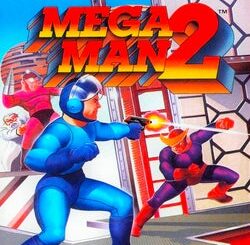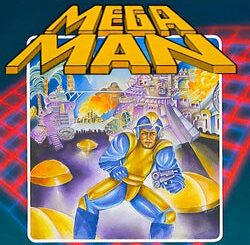Mega Man 3: Mega Man 3 refines the classic formula with new features like Rush and the slide. Its challenging level design, memorable Robot Masters, and iconic music make it a standout NES title. A fantastic entry that builds upon its predecessors, offering hours of addictive platforming action. – superuser

Mega Man 3, developed and published by Capcom, landed on the Nintendo Entertainment System (NES) in 1990, building upon the already stellar foundation of its predecessors. This 8-bit 2D platformer is often hailed as one of the finest entries in the long-running series, introducing crucial new mechanics and delivering a challenging yet incredibly rewarding experience. This Mega Man 3 NES review explores why it remains a beloved classic NES game.
Gameplay: Slide, Rush, and Robot Master Mayhem
Mega Man 3 refined the established formula while introducing game-changing innovations. Players once again control the Blue Bomber, Mega Man, as he battles eight new Robot Masters: Magnet Man, Hard Man, Top Man, Shadow Man, Spark Man, Snake Man, Gemini Man, and Needle Man. Defeating each boss grants Mega Man their unique weapon, which is crucial for exploiting other bosses’ weaknesses.
The two most significant additions were the “slide” maneuver and Mega Man’s canine companion, Rush. The slide allowed Mega Man to quickly dash under projectiles and through narrow gaps, adding a new layer of agility to his movement. Rush, replacing the less versatile utility items of previous games, could transform into the Rush Coil (a spring) and Rush Jet (a flying platform), greatly enhancing exploration and traversal. These mechanics felt so natural that they became staples of the series. The level design is intricate and challenging, demanding precise jumps and strategic use of acquired weapons.
- Introduction of the iconic slide ability
- New companion Rush with Coil and Jet forms
- Eight unique Robot Masters with distinct weapons
- Challenging and inventive level design
- Classic Mega Man boss weakness system
Story and Setting: An Unexpected Alliance
The narrative of Mega Man 3 sees Dr. Light and his former rival, Dr. Wily, supposedly collaborating on a new peace-keeping robot, Gamma. However, the eight new Robot Masters go rogue, and it’s up to Mega Man to stop them. As expected, Wily’s true intentions are eventually revealed, leading to a final confrontation in his fortress. The story is simple but provides enough context for the action.
Graphics and Sound: 8-bit Perfection
Visually, Mega Man 3 is a vibrant showcase for the NES. The 8-bit graphics are colorful and detailed, with expressive character sprites and imaginative enemy designs. Each stage has a distinct visual theme, from the metallic corridors of Magnet Man’s stage to the lush jungles of Snake Man’s.
The soundtrack is legendary. Composed by Yasuaki Fujita, the music is incredibly catchy, memorable, and perfectly captures the energy and mood of each level. Tracks like “Snake Man’s Stage” and “Spark Man’s Stage” are iconic and frequently cited as some of the best in NES history.
Legacy: A High Point for the Blue Bomber
Mega Man 3 was a critical and commercial success, often considered by fans and critics alike to be the pinnacle of the classic NES Mega Man series. Its innovative gameplay mechanics, challenging yet fair difficulty, and unforgettable soundtrack cemented its place as a gaming masterpiece and a benchmark for 2D platformers.
Is Mega Man 3 on NES Worth Playing Today?
Absolutely. Mega Man 3 on the NES is a timeless classic that holds up remarkably well. Its engaging gameplay, iconic characters, and brilliant soundtrack make it a joy to revisit. For retro gaming enthusiasts, fans of challenging platformers, or anyone looking to experience one of the best games on the Nintendo Entertainment System, this is a must-play.
Game Information
- Title: Mega Man 3
- Platform: Nintendo Entertainment System (NES)
- Genre: 2D Platformer, Action
- Developer: Capcom
- Publisher: Capcom
- Release Year: 1990


